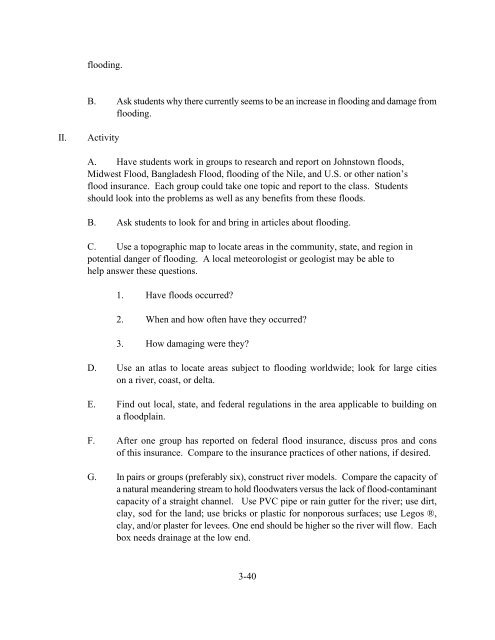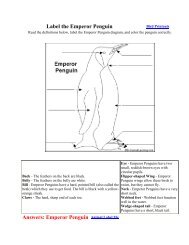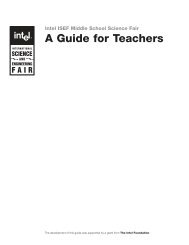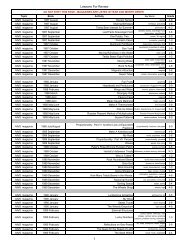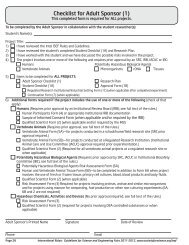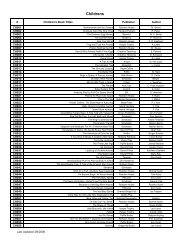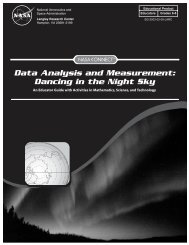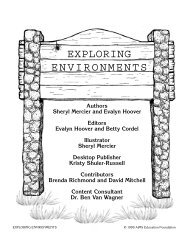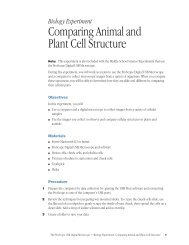BIOGRAPHY OF A RIVER
BIOGRAPHY OF A RIVER
BIOGRAPHY OF A RIVER
Create successful ePaper yourself
Turn your PDF publications into a flip-book with our unique Google optimized e-Paper software.
flooding.B. Ask students why there currently seems to be an increase in flooding and damage fromflooding.II.ActivityA. Have students work in groups to research and report on Johnstown floods,Midwest Flood, Bangladesh Flood, flooding of the Nile, and U.S. or other nation’sflood insurance. Each group could take one topic and report to the class. Studentsshould look into the problems as well as any benefits from these floods.B. Ask students to look for and bring in articles about flooding.C. Use a topographic map to locate areas in the community, state, and region inpotential danger of flooding. A local meteorologist or geologist may be able tohelp answer these questions.1. Have floods occurred?2. When and how often have they occurred?3. How damaging were they?D. Use an atlas to locate areas subject to flooding worldwide; look for large citieson a river, coast, or delta.E. Find out local, state, and federal regulations in the area applicable to building ona floodplain.F. After one group has reported on federal flood insurance, discuss pros and consof this insurance. Compare to the insurance practices of other nations, if desired.G. In pairs or groups (preferably six), construct river models. Compare the capacity ofa natural meandering stream to hold floodwaters versus the lack of flood-contaminantcapacity of a straight channel. Use PVC pipe or rain gutter for the river; use dirt,clay, sod for the land; use bricks or plastic for nonporous surfaces; use Legos ®,clay, and/or plaster for levees. One end should be higher so the river will flow. Eachbox needs drainage at the low end.3-40


